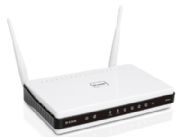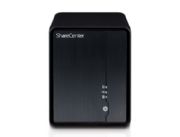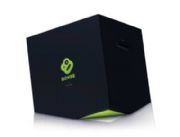How to build a home entertainment network
How to build a home entertainment network

It isn’t a complicated setup. With a few simple pieces of equipment, you can use your computer network as a next-generation entertainment hub.

Your network is the centerpiece of this operation, and if you’re interested in high definition media, then speed, range, and bandwidth are crucial. D-Link’s DIR-657 Wireless N HD Media Router is a 802.11n router that provides all the bandwidth you need for today’s HD movies and television programmes. With its built-in DLNA-certified Media Server, this router allows you to stream media content directly onto computers, game consoles and media players like the Boxee Box by D-Link. The DIR-657 comes with a SD card slot so you can share your photos, music and videos in a standard SD card with everyone in your home. You can even share any USB device (like a Printer or Hard Drive), courtesy of D-Link’s SharePort™ Plus technology across your network with family and friends.

If you have multiple floors extend the range of your network with a bridge: You can keep it wireless with the D-Link DAP-1522, which enhances your wireless signal to reach into the remote rooms of the house (or outside). Or opt for PowerLine, a technology that uses the electrical lines running through your walls to transmit media to other parts of the house. Just plug the adapters into any wall socket and your network is quickly up and running.

With your network configured, it’s time to look at your media itself. You’ll be able to access media files stored on any computer, but a better solution is to use a Network Attached Storage (NAS) device to centrally store all your files in one place. By offloading the storage from your PC, you can prevent large media files from filling up your computer’s hard drive and also achieve better protection for those files by placing them on a dedicated storage device. D-Link’s ShareCenterTM 2-Bay NAS attaches directly to your router, making it convenient and accessible by multiple devices in the house.

4. Connect the TV
Finally, to provide entertainment for the whole family, a simple media player, like the Boxee Box by D-Link, in your entertainment cabinet can bring content from your network and the Internet straight to your TV. Just plug the Boxee Box into your HDTV and configure its wireless access. Soon, you’ll be zipping files from your computers or NAS device straight to the living room. Alternately, you can transfer media to the Boxee Box by plugging in an SD card from a digital camera or by using a USB portable storage device. As a bonus, you’ll be able to access programmes streamed from the web, via apps like the BBC iPlayer or listen to music via Spotify directly from your HDTV.
A home entertainment network doesn’t just send movies and music from your computer to your television, it gives you access to media from any device, anywhere in the house.
